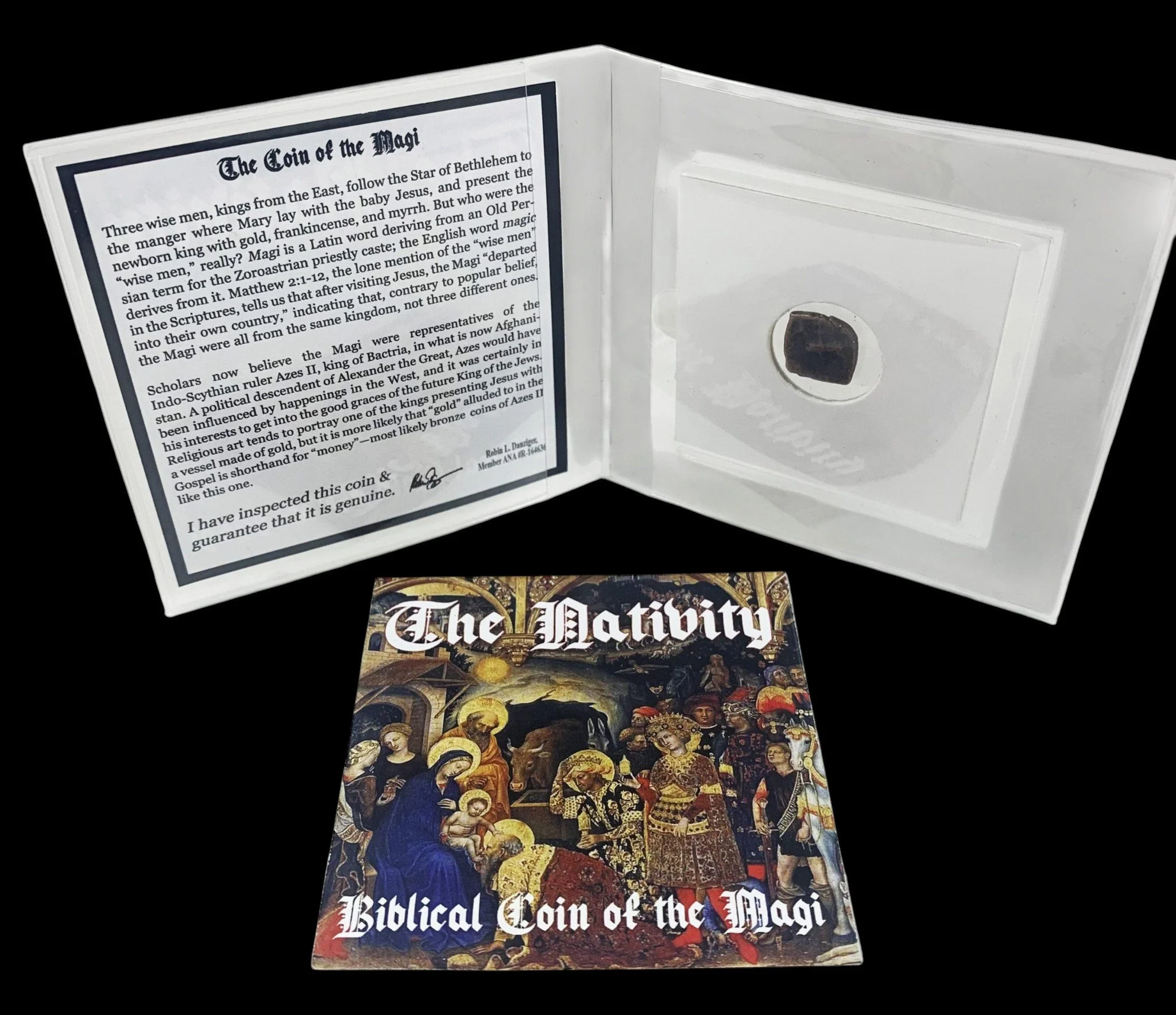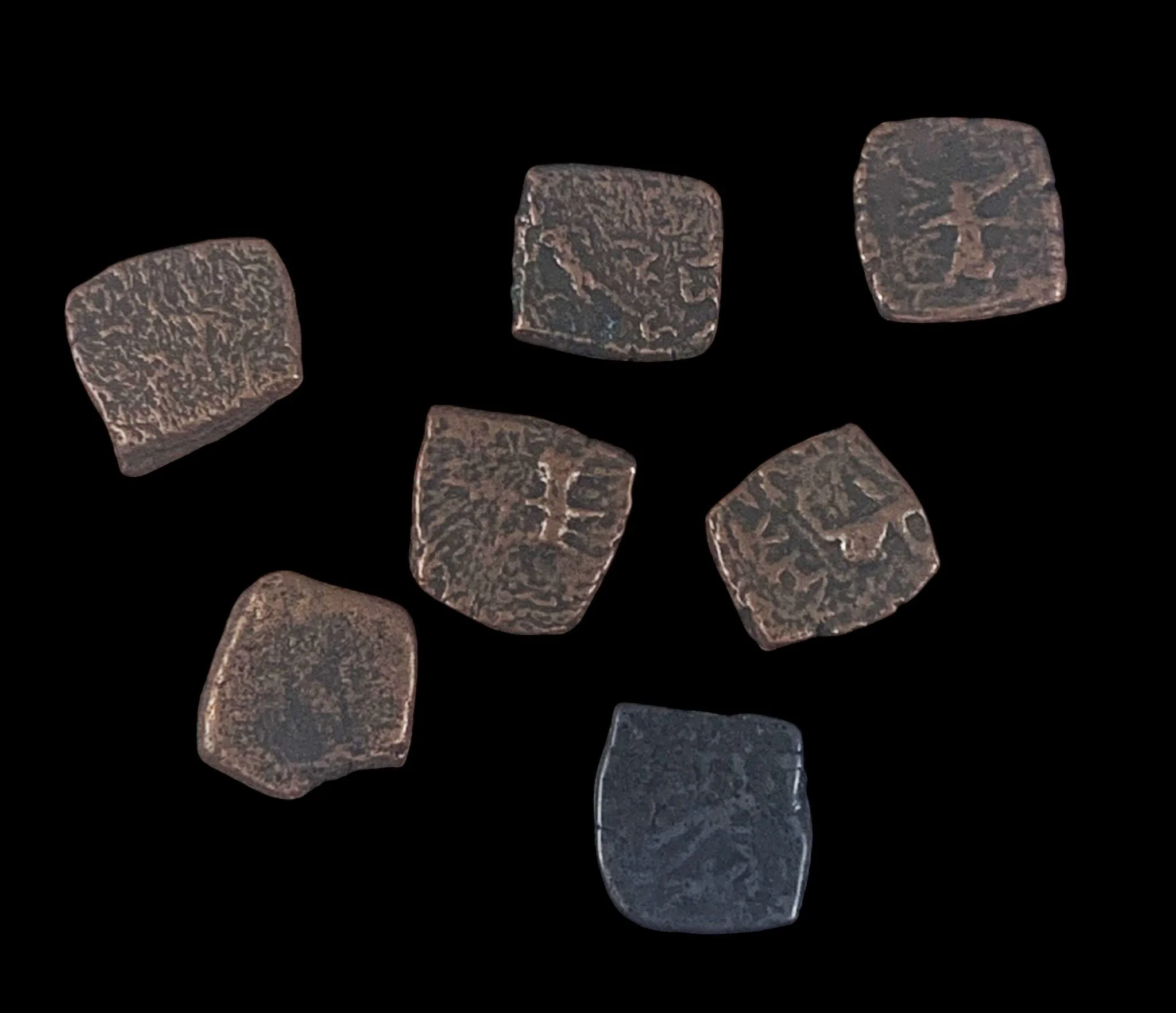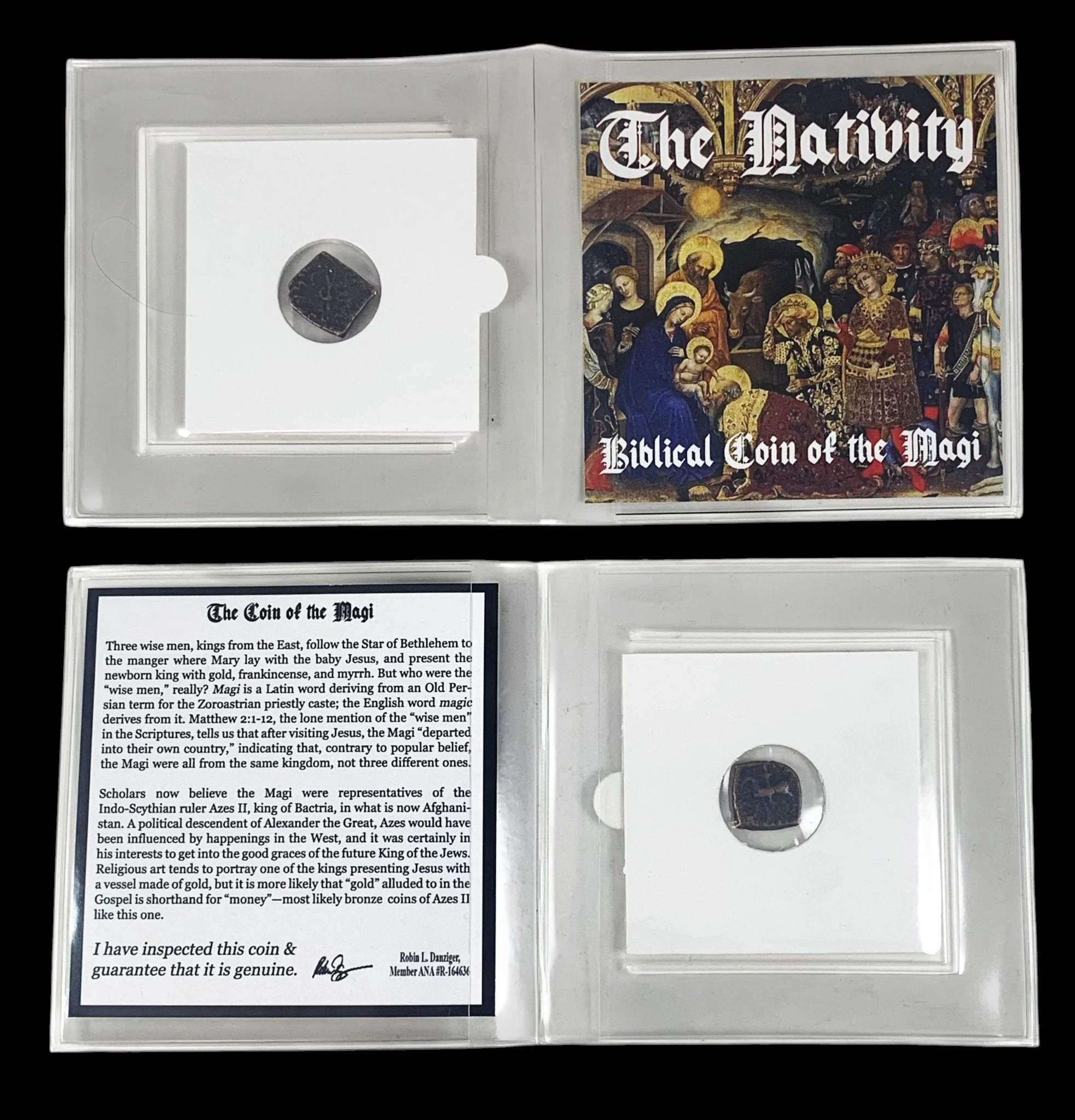 Image 1 of 5
Image 1 of 5

 Image 2 of 5
Image 2 of 5

 Image 3 of 5
Image 3 of 5

 Image 4 of 5
Image 4 of 5

 Image 5 of 5
Image 5 of 5






Ancient Judaean Bronze Coin – Widow’s Mite (about 2,100 years old) – The Biblical Coin Mentioned by Jesus – NGC Certified
The coins shown are representative examples of the grade and type, but not the actual specimens for sale. For details on NGC’s grading standards and definitions, please refer to our NGC Grading page.
This small bronze coin, commonly referred to as the "Widow's Mite," dates from the reign of Alexander Jannaeus, ruler of the Hasmonean Kingdom of Judaea. The term "Widow's Mite" refers to the Gospel story in which Jesus praises a poor widow who donates two small coins (lepta or prutot), representing all she had, making these humble coins directly connected to a famous biblical narrative.
Coin Description:
Front side: Likely features an anchor or star within a circle, a common design on coins of Alexander Jannaeus
Back side: Probably displays a wheel-like design or lily with Paleo-Hebrew inscription identifying the ruler or kingdom
Technical Details:
Bronze composition
Prutah denomination (smallest coin in the Judaean monetary system)
NGC certified (Numismatic Guaranty Corporation)
Minted approximately 103-76 BCE during the reign of Alexander Jannaeus
Condition: Housed in NGC slab, specific grade not provided
Historical Significance: This coin represents everyday economic life in ancient Judaea and gained special cultural significance through its association with the biblical "Widow's Mite" story in the Gospels of Mark and Luke. Alexander Jannaeus, who minted these coins, expanded the Hasmonean Kingdom to its greatest extent through military conquests. Despite their humble appearance and minimal monetary value, these small bronze coins have become among the most famous ancient coins due to their connection to Jesus' teaching about sacrifice and devotion, making them especially meaningful to collectors of biblical artifacts.
The coins shown are representative examples of the grade and type, but not the actual specimens for sale. For details on NGC’s grading standards and definitions, please refer to our NGC Grading page.
This small bronze coin, commonly referred to as the "Widow's Mite," dates from the reign of Alexander Jannaeus, ruler of the Hasmonean Kingdom of Judaea. The term "Widow's Mite" refers to the Gospel story in which Jesus praises a poor widow who donates two small coins (lepta or prutot), representing all she had, making these humble coins directly connected to a famous biblical narrative.
Coin Description:
Front side: Likely features an anchor or star within a circle, a common design on coins of Alexander Jannaeus
Back side: Probably displays a wheel-like design or lily with Paleo-Hebrew inscription identifying the ruler or kingdom
Technical Details:
Bronze composition
Prutah denomination (smallest coin in the Judaean monetary system)
NGC certified (Numismatic Guaranty Corporation)
Minted approximately 103-76 BCE during the reign of Alexander Jannaeus
Condition: Housed in NGC slab, specific grade not provided
Historical Significance: This coin represents everyday economic life in ancient Judaea and gained special cultural significance through its association with the biblical "Widow's Mite" story in the Gospels of Mark and Luke. Alexander Jannaeus, who minted these coins, expanded the Hasmonean Kingdom to its greatest extent through military conquests. Despite their humble appearance and minimal monetary value, these small bronze coins have become among the most famous ancient coins due to their connection to Jesus' teaching about sacrifice and devotion, making them especially meaningful to collectors of biblical artifacts.




















